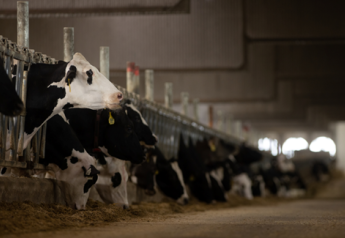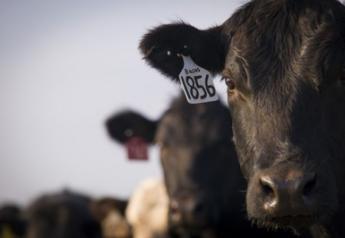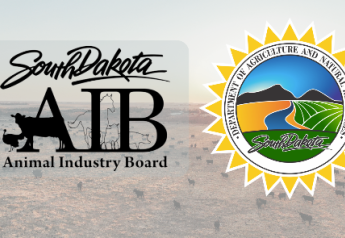Fly and Tick Season is Upon Us

From year-to-year the fly and tick season is highly variable. Some producers may have pinned their hope on a hard winter to reduce these external parasites but in reality, it may not influence the overall intensity or longevity of the season.
Regardless of the perception of how bad the fly or tick populations could be it is important to plan on control practices that are economical and allow the cattle to be efficient in their energy expenditures.
Cattle are impacted by blood feeding external parasites whether they are ticks or flies. Anytime one of these pests becomes excessive it causes stress to the animals. Stress can be a result from the blood feeding activity or the animal’s reaction to these parasites when on the animals.
Essentially, when cattle are infested with flies or ticks they become less efficient in converting nutrients into weight gain or milk production for the claves. This means they are utilizing energy in different areas to combat the stress from fly and tick feeding. Another issue associated with some fly and tick species is the role they play in pathogen transmission into the herd such as anaplasmosis.
When considering how to plan for a fly and tick control program for your cattle operation it is important to know the difference in application methods and their specific longevity in relation to adequate control. While most cattle producers prefer the ease of use of pour-on type products this method will only provide at most three weeks of control if these products do not have systemic activity.
Most pour-on products with systemic activity are those that are considered endectocides or within the class of macrocyclic lactones including ivermectin and moxidectin type products. These products will provide some suppression of blood feeding flies and ticks for up to 45 days. However, cattle producers should always design their endectocide applications with internal parasites in mind not just flies or ticks.
Some cattle producers utilize cattle oilers or modified self-application devices, but it is important that the majority of the herd be treated properly. This means cattle producers need to monitor when animals interact with these types of devices to ensure that at least 75% of the herd is treated. It is also important to utilize the proper kind of oil and be sure the pesticide is labeled for oilers or to be mixed with oil.
When evaluating these types of devices efficacy is somewhat improved when mixing the pesticide with #2 diesel or mineral oil. This type of device provides adequate control for horn flies up to a month if the device is maintained well and only provide adequate control of ear ticks.
Insecticide ear tags are commonly used for ticks that infest the ears and horn flies. These devices utilize the animal’s behavior to spread the pesticide across the ears and back as the animal tosses their heads back in reaction to horn fly infestations. This type of application will provide some level of control in this area for up to three months and in some areas where the fly and tick populations are not excessive it will provide up to four months of control. It is important to rotate the type of pesticide class the ear tags belong to each year to limit pesticide resistance.
Sprays are still a common method among producers with smaller herds or producers with resources that allow them to treat the cattle while in the pasture such as ATV sprayers. The approach to spraying cattle for flies versus ticks are slightly different in the coverage areas. Typically, for flies you want to treat from the head to the tail until the animal appears wet but not to the point of run-off.
If treating for ticks you will need to treat the poll of the head and the ears down through the brisket area for ear ticks and thoroughly treat around the udders or between all legs when treating for other types of ticks. For most tick treatments, you will need to apply the pesticide to certain areas more thoroughly than if treating for flies to allow for adequate coverage where ticks prefer to attach to cattle. Spray applications should always be planned with some consideration of weather events especially significant rainfall that could influence the pesticide efficacy. A sound spray application will last approximately 2 weeks but other factors can influence the longevity of the spray such as moisture or cattle behavior that leads to dilution of the product such as when cattle cool themselves off in ponds.
Overall, when making decisions concerning proper techniques for fly and tick control cattle producers should consider that not all products will be as persistent as others. Also, all of the above applications can be combined with the use of an insect growth regulator (IGR) to sustain longer horn fly control but IGR products do not control ticks.
See Dr. Talley discuss increasing activity of ticks in coming weeks on Sunup TV on May 15, 2021.







